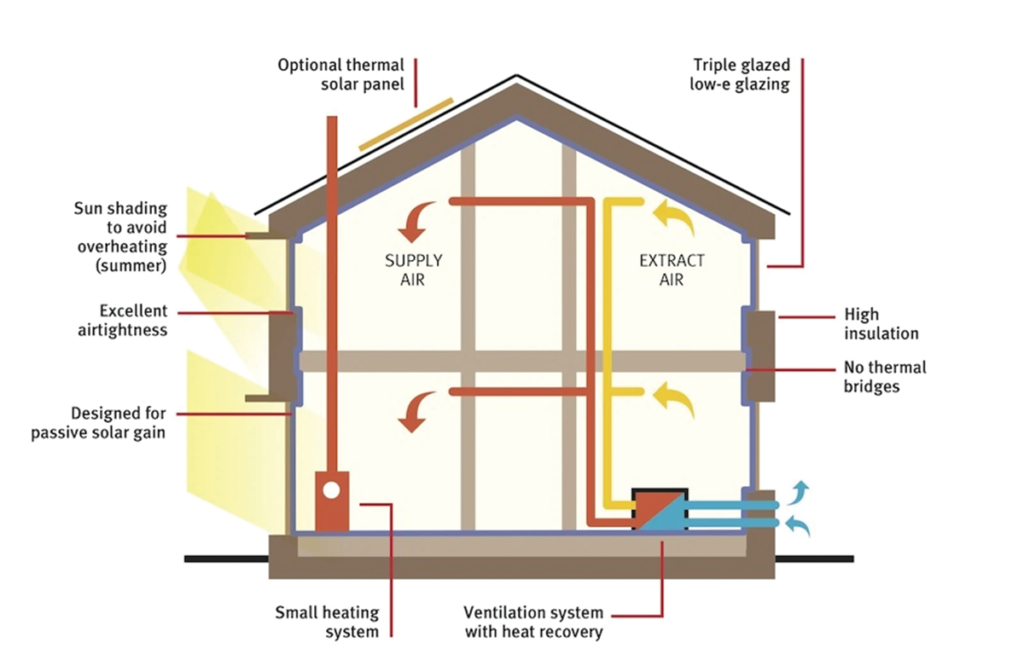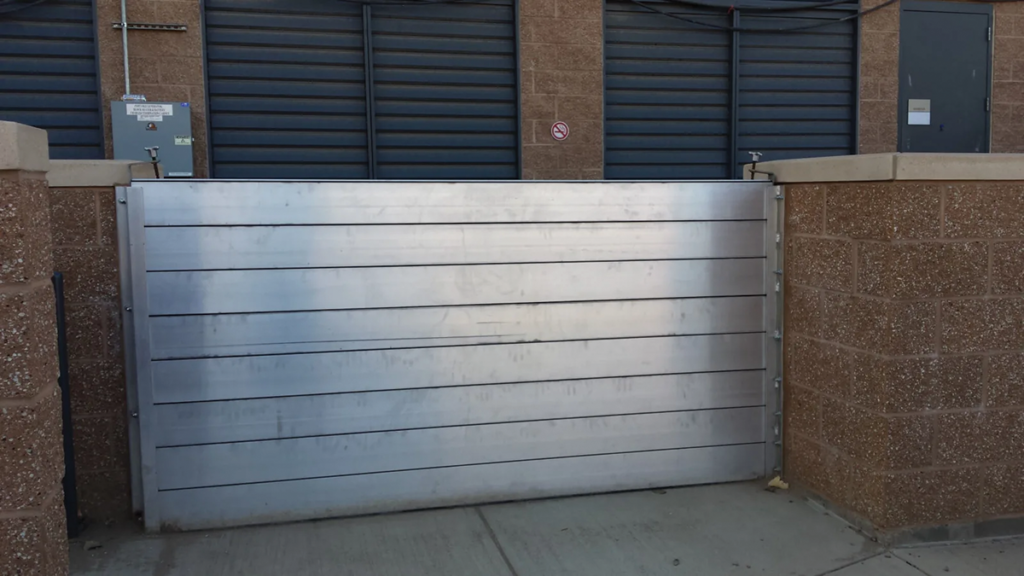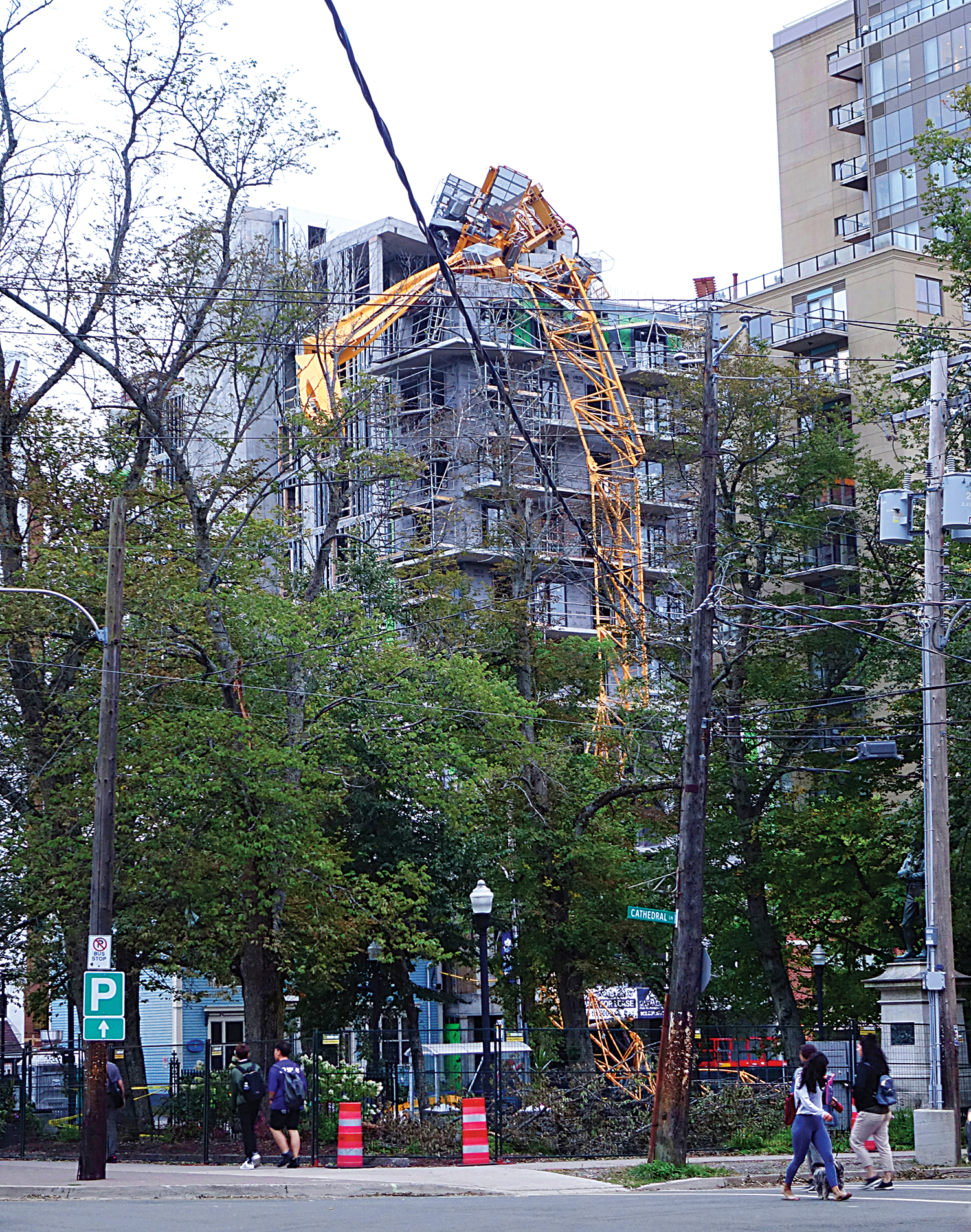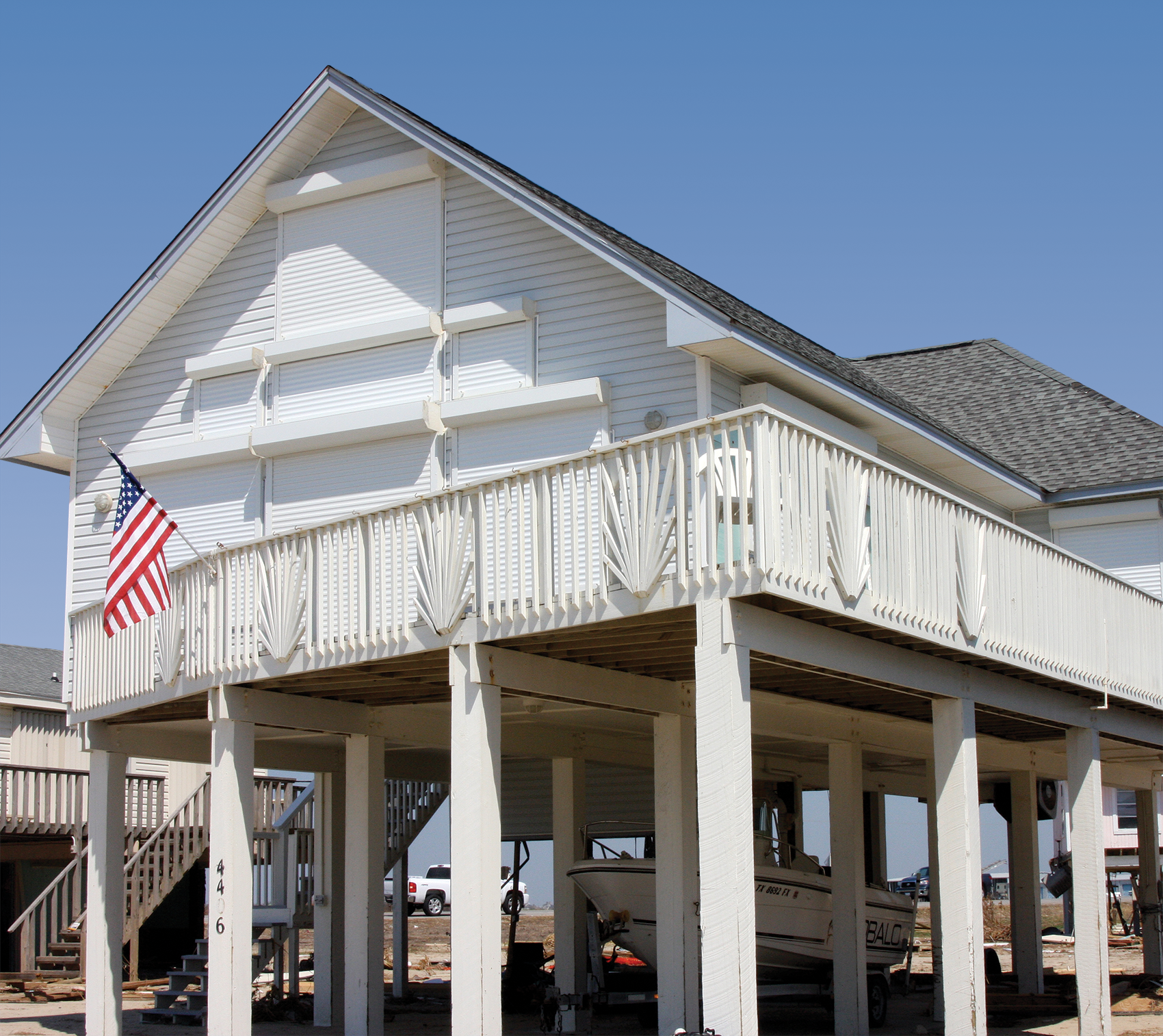In 2017, Hurricane Maria hit Puerto Rico, devastating the island’s infrastructure and killing 2,975 people. In the subsequent investigation, government officials found that while the buildings built according to code largely remained standing, water had still gotten into them and severely damaged the buildings’ interiors.
The disaster sheds a light on one of the most important parts of building resilience—the building envelope. Built to keep the outside out, the envelope ensures that our buildings are comfortable and safe. But the codes behind the envelopes were written for a world without climate change, and extreme weather makes them obsolete.
What happens when old building envelopes meet new weather events? And what are people in the architecture, engineering and construction (AEC) industry doing about it?
The Building Envelope
The building envelope is the physical barrier between the inside and outside of a building, including elements like windows, walls, roofs and foundations. The envelope is responsible for four main functions: structural support for the building, and management of moisture, temperature and airflow.
When the U.S. National Institute of Standards and Technology (NIST) visited Puerto Rico months after Hurricane Maria, it found that code-built buildings were generally still standing, but that water damage on the buildings’ interiors had rendered the structures unusable—a failure of moisture management.
According to NIST’s preliminary report, code-built buildings like hospitals and schools had “good structural performance” but “suffered extensive nonstructural damage and loss of function.” Unfortunately, roofs, doors and windows were the weak points, and rain was able to pass through undamaged doors. “If a critical building loses its ability to function due to rainwater penetration, you’re not able to provide services,” said Erica Kuligowski, the leader of the NIST team.
Hurricane Maria is a worst-case scenario. But what other challenges does global climate change pose to our building envelopes?
Can’t Stand the Heat
There’s a reason climate change was initially called “global warming”: one of the most obvious symptoms is that the Earth is heating up at an unprecedented rate. Heat is already the leading source of weather-related deaths in the U.S., and vulnerable populations like young children and the elderly bear the brunt of hot weather. Building envelopes are constructed to regulate their buildings to a comfortable temperature, but the hotter it gets, the harder it will be to keep the people inside cool.
A partial solution is using techniques from the Passivhaus standard, a voluntary energy efficiency standard that reduces the need for electric heating and cooling. These houses are well-insulated and have a “tight” building envelope to provide more control over airflow and temperature.
One Passivhaus standard is heat recovery ventilation systems, which respond to cold weather by “recovering” heat from outgoing air and using it to heat incoming fresh air. In hot weather, the system works in reverse, “recovering” heat from incoming hot air to heat outgoing cold air.

Passivhaus-trained architects also use solar shielding, a fancy-sounding phrase that essentially means limiting the amount of sunlight that falls on the building envelope directly, through interventions like strategically planted trees and outdoor shutters or blinds. Finally, another Passivhaus standard is cross-ventilation, which makes use of the old-fashioned cross breeze to cool houses.
Winds of Change
Water poses a serious threat to buildings during tropical storms, but wind can be just as dangerous. During a hurricane, both lateral (horizontal) and uplift forces can be hazardous to a building’s structural integrity. Building openings like doors and windows are vulnerable to breaking in under strong winds, and the wind rushing in can build up enough pressure on the roof to tear it off. Updrafts can also lift the roof, making the structure more likely to collapse.
There are a few envelope adaptations that can make this kind of collapse less likely. First of all, small adaptations like car-style impact glass and hurricane shutters will make it less likely that the openings will let the wind in. Second, buildings with a continuous load path are less vulnerable to wind. In practice, that means anchoring the roof to the foundation.

On the more extreme end of wind adaptation, dome-shaped buildings have few surfaces that can be impacted by lateral or uplift forces, giving them a low drag coefficient. This is especially true for monolithic dome buildings; dome-shaped buildings are cast in a single piece, without a separate roof and walls. The “Eye of the Storm” home, built in South Carolina, is one of the most famous examples of monolithic dome construction. Built after its owners lost a home to Hurricane Hugo, the building is made entirely of steel and concrete.
Après-Moi Le Dé luge
As the climate changes, buildings may have to contend with more flooding, both from rising seas and extreme precipitation. And flooding is costly to buildings. This year’s spring flooding in Nebraska and Iowa cost $3 billion on its own.
At the individual building level, there are three specific types of strategies to deal with flooding: avoidance, water exclusion, and water entry. Avoidance includes strategies focused on making sure that floodwaters don’t even reach the envelope, either by elevating the building or by outright banning buildings in flood-prone areas. But exclusion and entry strategies both revolve around the envelope.
Water exclusion strategies, which are designed to keep the water out of a building, include low-tech solutions like sandbags and plastic skirting around the building. Water entry strategies, also known collectively as “wetproofing,” are strategies designed to limit the damage to a building once it has been breached.
Water entry strategies are extremely effective because they prevent the buildup of hydrostatic pressure, which can cause serious structural damage, but they’re less commonly used. One example is flood vents, small vents designed to let water into an area like a crawlspace or a garage when floodwaters overtop them.
Often, buildings use a little of each kind of strategy to more effectively deal with floodwaters. One example of a multistrategy building is Clippership Wharf, a mixed-use housing development on the Boston waterfront. The building’s architects put in a “living shoreline,” a 10-foot intertidal zone with terraces that is designed to drain and fill with the tide, to set the buildings back from the shore (avoidance). But they also made the building envelope itself flood resistant, planning for a 100-year flood (a flood with a 1 percent chance of occurring in any given year).
The architects used removable flood planks, aluminum planks stacked over the top of each other to create a watertight barrier that can slide into place to protect entry points before a flood, as an exclusion strategy. They also planned egress doors above the 100-year waterline, with stairs down, to reduce the likelihood of people becoming trapped in the building or letting water in. Finally, as a water entry strategy, they planned for the lowest-level floors to be breached, and put the electrical and HVAC work in on the ground floor instead.

The floodproofing strategies made the building slightly more costly, but were received well by the community. “These are real issues that are important today,” Steven Caswell, one of the architects behind the project, said at this year’s American Institute of Architects (AIA) conference.
Pushing the Envelope?
As weather becomes more extreme, some governments are starting to revisit building standards. Canada’s National Research Council will be addressing climate change adaptations during the 2015 to 2020 code cycle, potentially including standards for basement flood prevention and more flood-adaptable concrete.
But there’s a problem: often, the people most vulnerable to extreme weather are the least likely to have the money for fancy building upgrades.
While Hurricane Maria saw the envelopes of code-certified buildings fail, it also saw the far more catastrophic failure of buildings that hadn’t been certified at all. In all, 55 percent of the island’s housing was built without proper code adherence (https://www.builderonline.com/building/building-science/hurricane-maria-shows-that-code-built-housing-holds-up-better_o), and many of these informally-built houses collapsed or were seriously damaged when the hurricane hit.
Last year, the Fourth National Climate Assessment found that climate change in the U.S. will hit low-income communities the hardest. Lower-income communities are more likely to have buildings without sufficient insulation or air-conditioning, and are less likely to have the resources to fix these buildings after a disaster.“Some property owners can afford to modify their homes to withstand current and projected flooding and erosion impacts,” the report reads. “Others who cannot afford to do so are becoming financially tied to houses that are at greater risk of annual flooding.”
Developments like the Clippership Wharf are certainly a step forward, but these green innovations are still too expensive for many Americans. Today’s architects and designers are certainly pushing the envelope when it comes to climate-ready building design. The question is, are they pushing it far enough or fast enough for the people who need it the most?
References
U.S. Midwest flooding cost estimated at more than $3B. CBC News. 2019, Mar 22. Accessed online at https://www.cbc.ca/news/world/midwest-floods-economic-cost-1.5068037
Flood Resilient Construction and Adaption of Buildings. Oxford Research Encyclopedia, Natural Hazard Science. 2017, Dec. Accessed online at https://oxfordre.com/naturalhazardscience/view/10.1093/acrefore/9780199389407.001.0001/acrefore-9780199389407-e-111?rskey=1zla33&result=5
Canada’s Building Code is getting a climate change rewrite. Is your home ready? CBC News. 2019, Apr 11. Accessed online at https://www.cbc.ca/news/canada/canada-building-code-climate-change-resilience-1.5092732
Climate change in the US will hurt poor people the most, according to a bombshell federal report. CNBC. 2018, Nov 26. Accessed online at https://www.cnbc.com/2018/11/26/climate-change-will-hurt-poor-people-the-most-federal-report.html
Reproduced by permission from www.engineering.com, Outside In: Designing Building Envelopes to Withstand Climate Change, June 28, 2019 (Mississauga, ON).















Find Us on Socials